Traffic Scenarios
Agents will experience multiple instances of 10 traffic scenarios selected from the NHTSA pre-crash typology.
Control loss
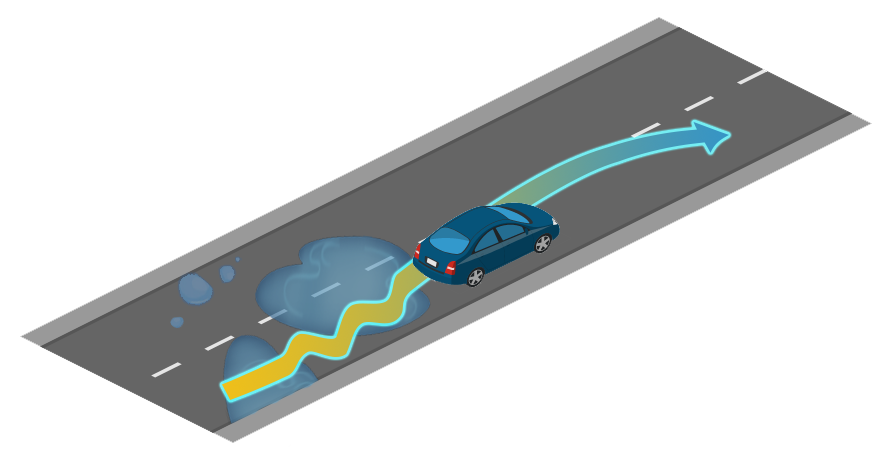
01 - Control loss without previous action.
The ego-vehicle loses control due to bad conditions on the road and it must recover, coming back to its original lane.
The ego-vehicle loses control due to bad conditions on the road and it must recover, coming back to its original lane.
Traffic negotiation
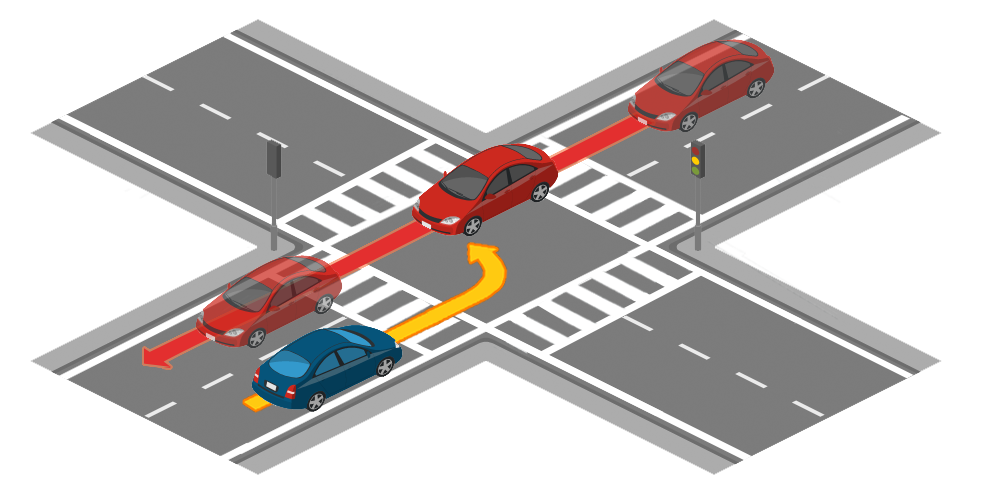
02 - Unprotected left turn at intersection with oncoming traffic.
The ego-vehicle is performing an unprotected left turn at an intersection, yielding to oncoming traffic. This scenario occurs at both signalized and non-signalized junctions.
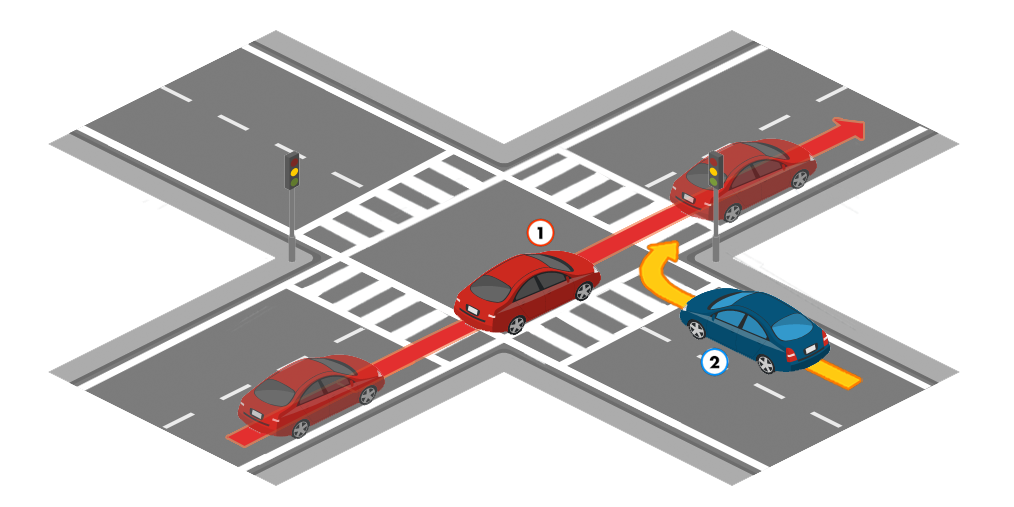
03 - Right turn at an intersection with crossing traffic.
The ego-vehicle is performing a right turn at an intersection, yielding to crossing traffic. This scenario occurs at both signalized and non-signalized junctions.
The ego-vehicle is performing a right turn at an intersection, yielding to crossing traffic. This scenario occurs at both signalized and non-signalized junctions.
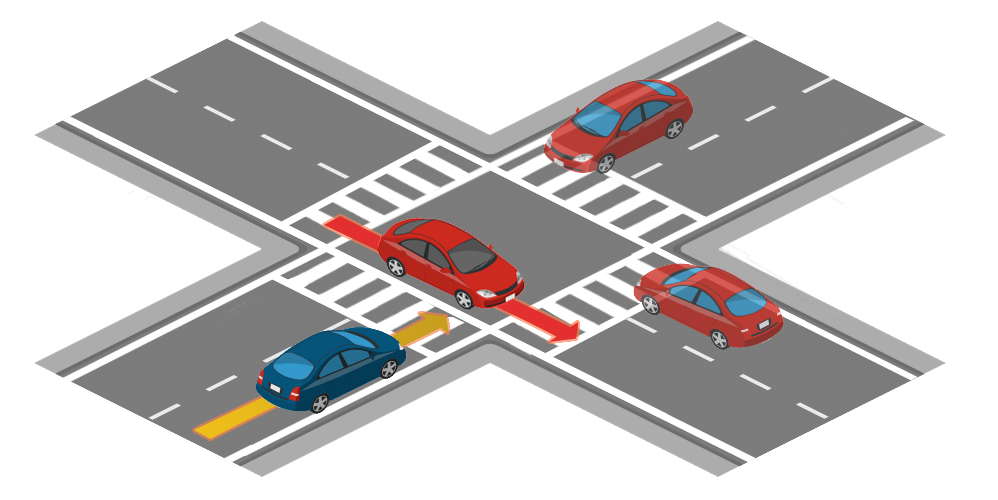
04 - Crossing negotiation at an unsignalized intersection.
The ego-vehicle needs to negotiate with other vehicles to cross an unsignalized intersection. In this situation it is assumed that the first to enter the intersection has priority.
The ego-vehicle needs to negotiate with other vehicles to cross an unsignalized intersection. In this situation it is assumed that the first to enter the intersection has priority.
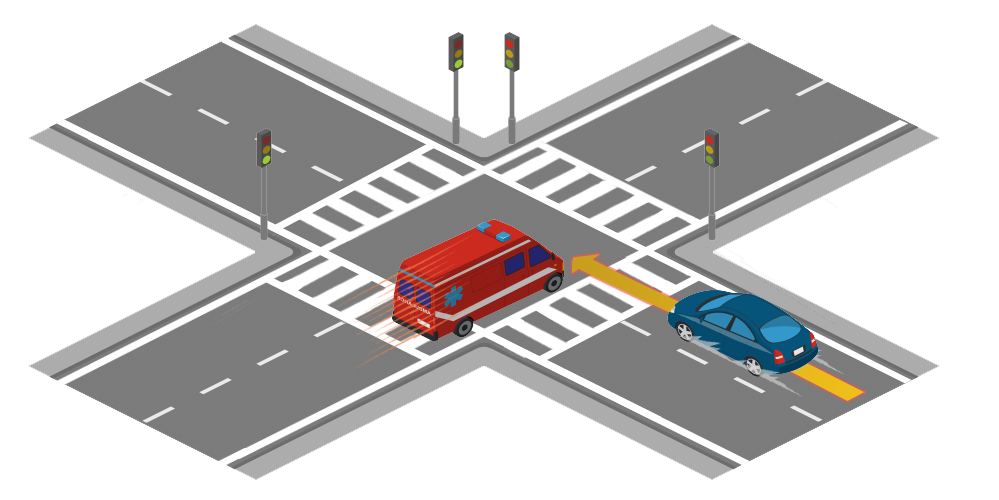
05 - Crossing traffic running a red light at an intersection.
The ego-vehicle is going straight at an intersection but a crossing vehicle runs a red light, forcing the ego-vehicle to avoid the collision. This scenario occurs at both signalized and non-signalized junctions.
The ego-vehicle is going straight at an intersection but a crossing vehicle runs a red light, forcing the ego-vehicle to avoid the collision. This scenario occurs at both signalized and non-signalized junctions.
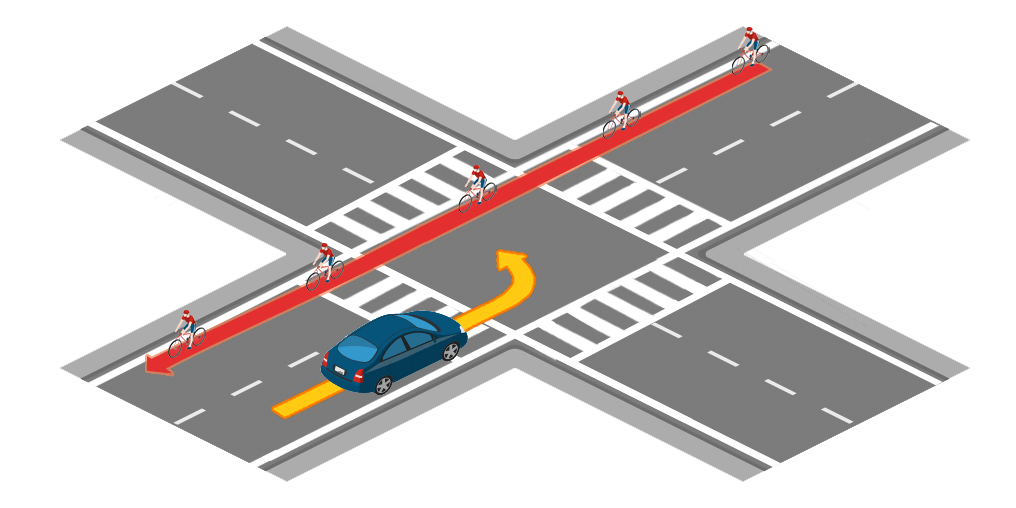
06 - Crossing with oncoming bicycles.
The ego-vehicle needs to perform a turn at an intersection yielding to bicycles crossing from either the left or right.
The ego-vehicle needs to perform a turn at an intersection yielding to bicycles crossing from either the left or right.
Highway
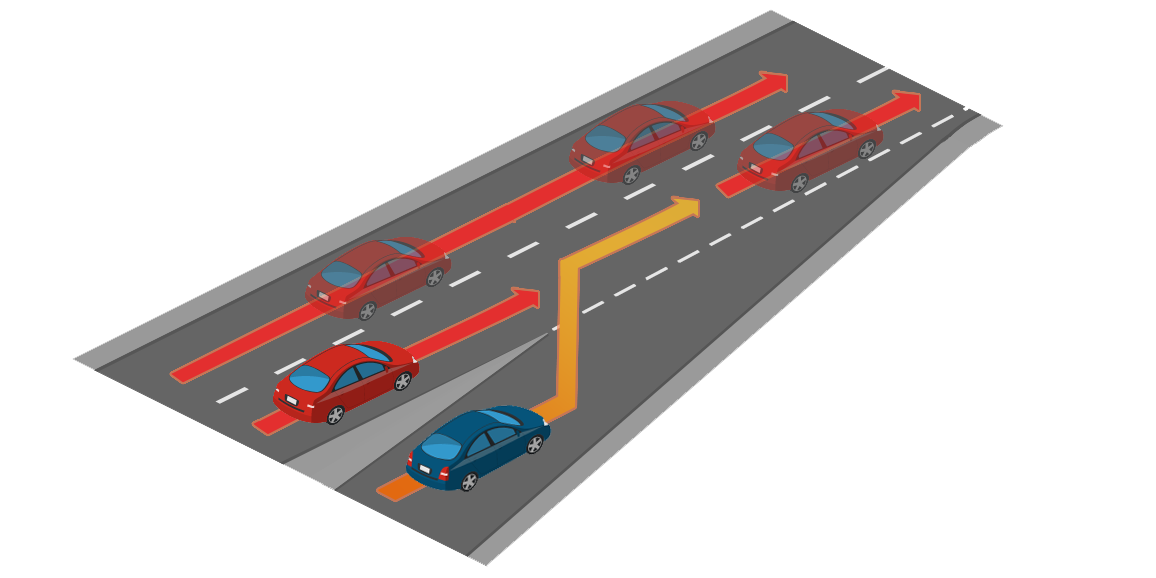
07 - Highway merge from on-ramp.
The ego-vehicle merges into moving highway traffic from a highway on-ramp.
The ego-vehicle merges into moving highway traffic from a highway on-ramp.
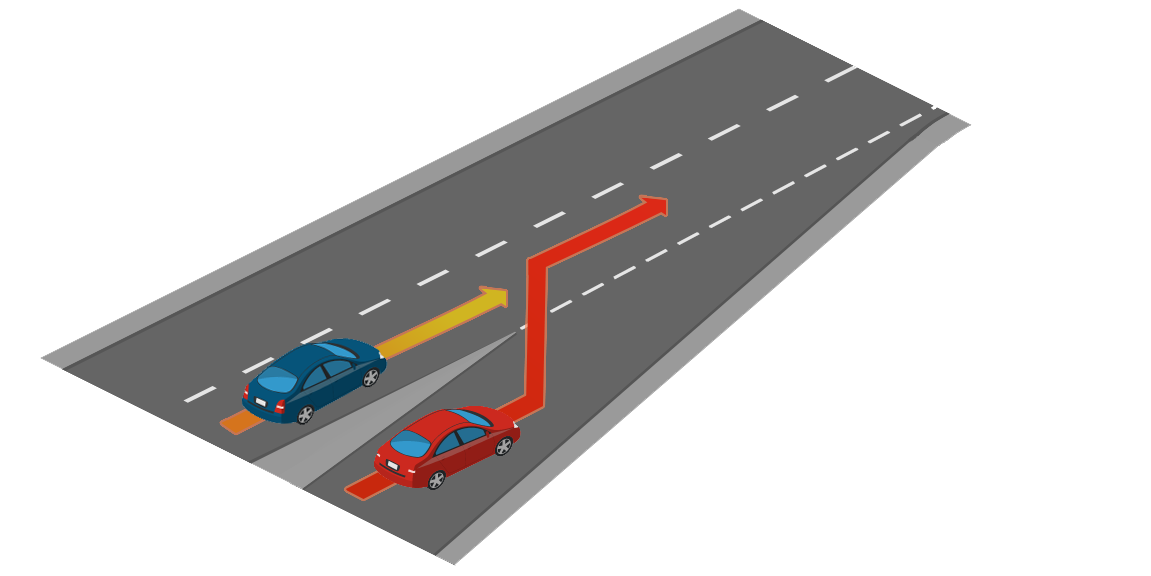
08 - Highway cut-in from on-ramp.
The ego-vehicle encounters a vehicle merging into its lane from a highway on-ramp. The ego-vehicle must decelerate, brake or change lane to avoid a collision.
The ego-vehicle encounters a vehicle merging into its lane from a highway on-ramp. The ego-vehicle must decelerate, brake or change lane to avoid a collision.
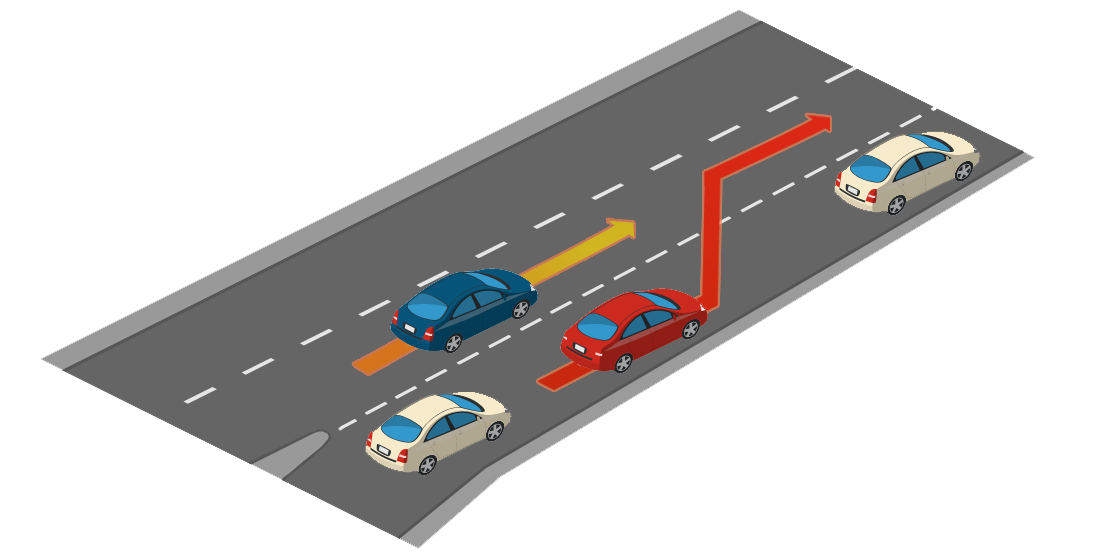
09 - Static cut-in.
The ego-vehicle encounters a vehicle cutting into its lane from a lane of static traffic. The ego-vehicle must decelerate, brake or change lane to avoid a collision.
The ego-vehicle encounters a vehicle cutting into its lane from a lane of static traffic. The ego-vehicle must decelerate, brake or change lane to avoid a collision.
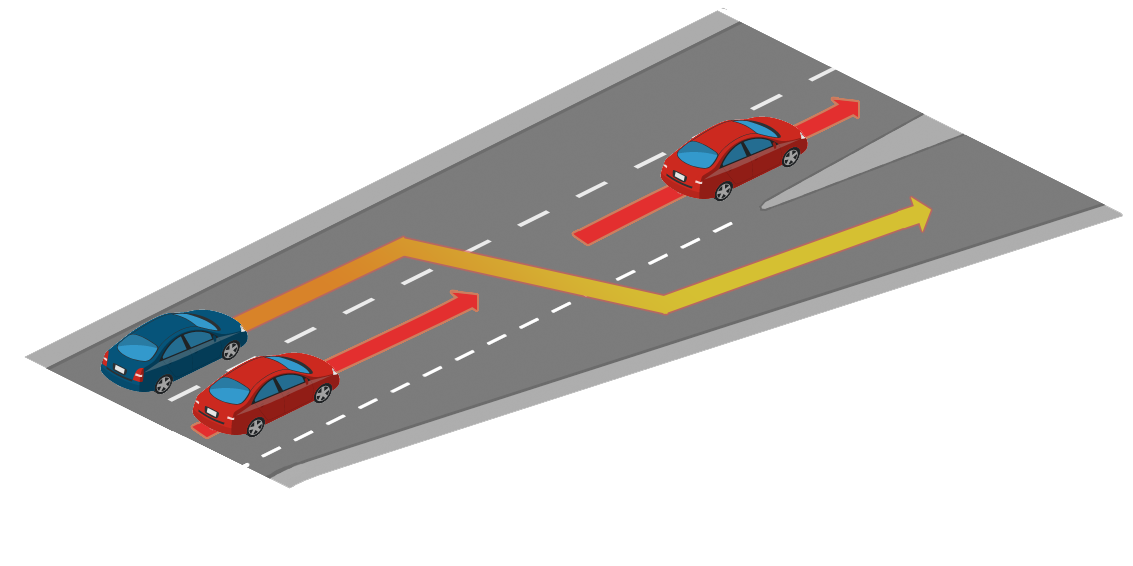
10 - Highway exit.
The ego-vehicle must cross a lane of moving traffic to exit the highway at an off-ramp.
The ego-vehicle must cross a lane of moving traffic to exit the highway at an off-ramp.
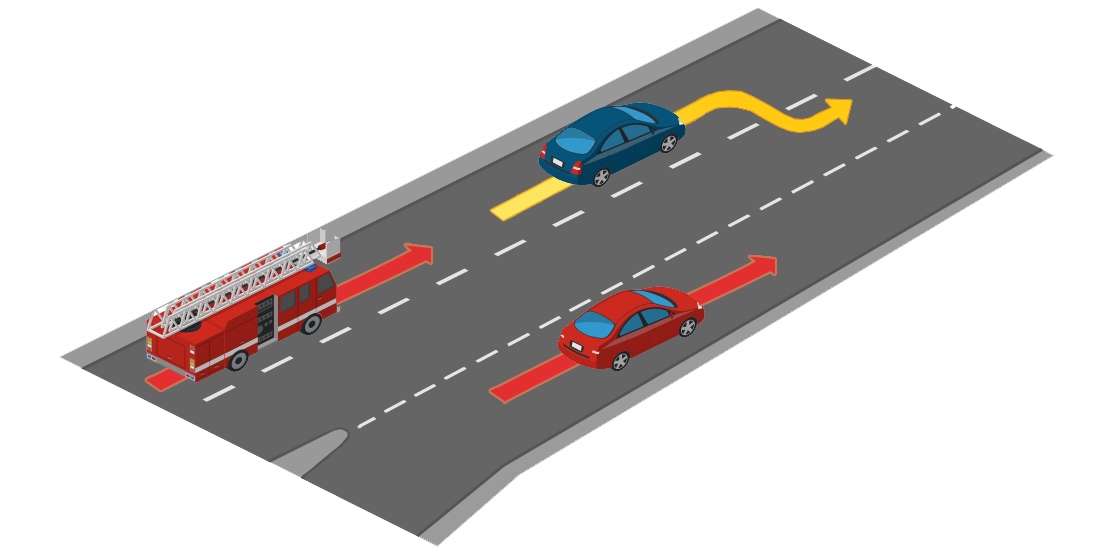
11 - Yield to emergency vehicle.
The ego-vehicle is approached by an emergency vehicle coming from behind. The ego-vehicle must maneuver to allow the emergency vehicle to pass.
The ego-vehicle is approached by an emergency vehicle coming from behind. The ego-vehicle must maneuver to allow the emergency vehicle to pass.
Obstacle avoidance
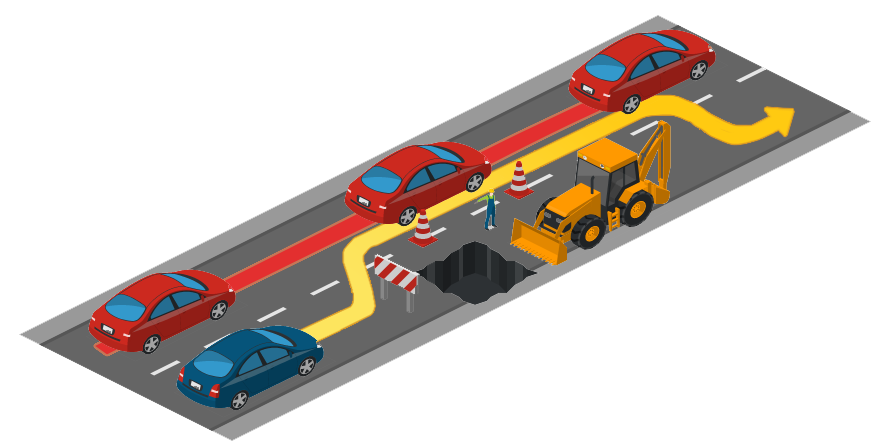
12 - Obstacle in lane.
The ego-vehicle encounters an obstacle blocking the lane and must perform a lane change into traffic moving in the same direction to avoid it. The obstacle may be a construction site, an accident or a parked vehicle.
The ego-vehicle encounters an obstacle blocking the lane and must perform a lane change into traffic moving in the same direction to avoid it. The obstacle may be a construction site, an accident or a parked vehicle.
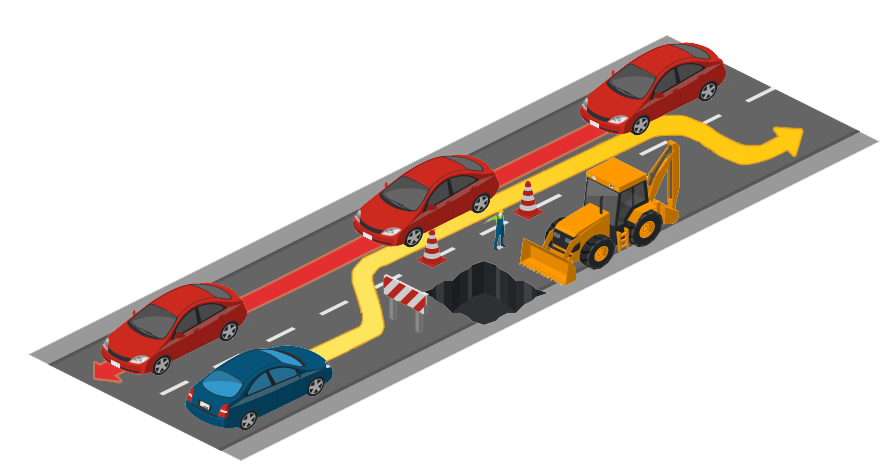
12a - Obstacle in lane.
The ego-vehicle encounters an obstacle blocking the lane and must perform a lane change into traffic moving in the opposite direction to avoid it. The obstacle may be a construction site, an accident or a parked vehicle.
The ego-vehicle encounters an obstacle blocking the lane and must perform a lane change into traffic moving in the opposite direction to avoid it. The obstacle may be a construction site, an accident or a parked vehicle.
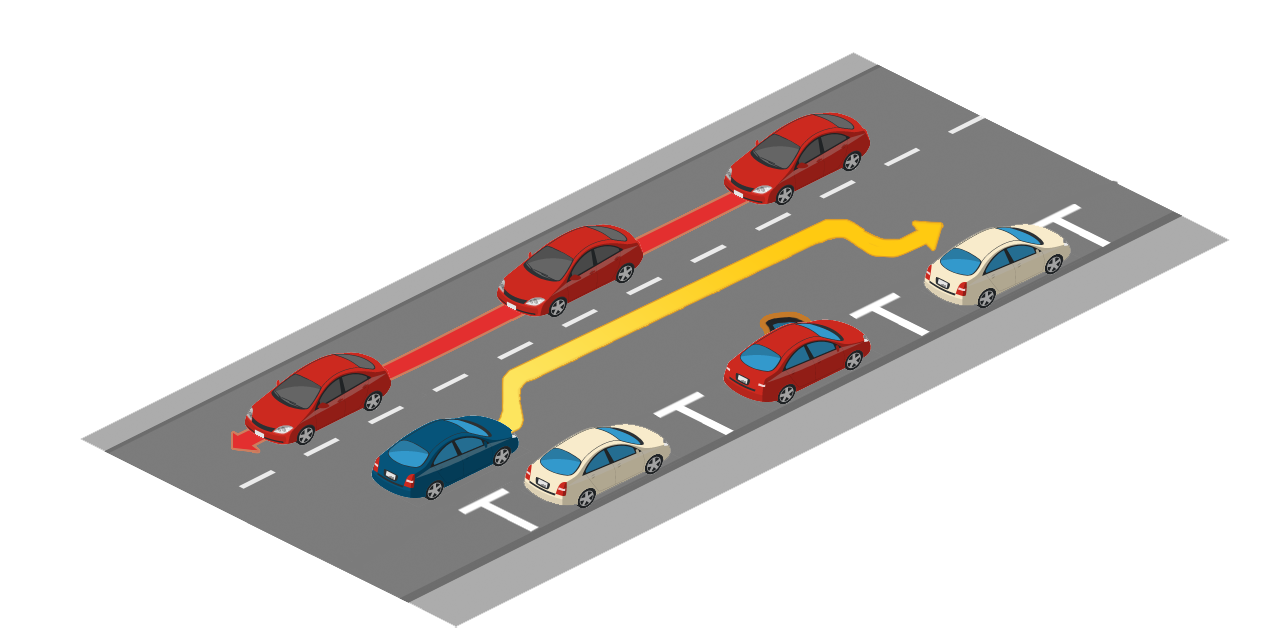
13 - Door obstacle.
The ego-vehicle encounters a parked vehicle opening a door into its lane and must maneuver to avoid it.
The ego-vehicle encounters a parked vehicle opening a door into its lane and must maneuver to avoid it.
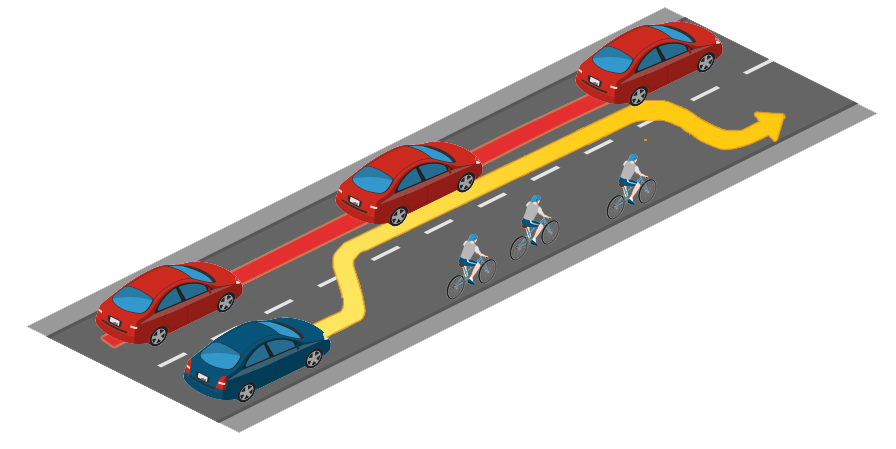
14 - Slow moving hazard at lane edge.
The ego-vehicle encounters a slow moving hazard blocking part of the lane. The ego-vehicle must brake or maneuver next to a lane of traffic moving in the same direction to avoid it.
The ego-vehicle encounters a slow moving hazard blocking part of the lane. The ego-vehicle must brake or maneuver next to a lane of traffic moving in the same direction to avoid it.
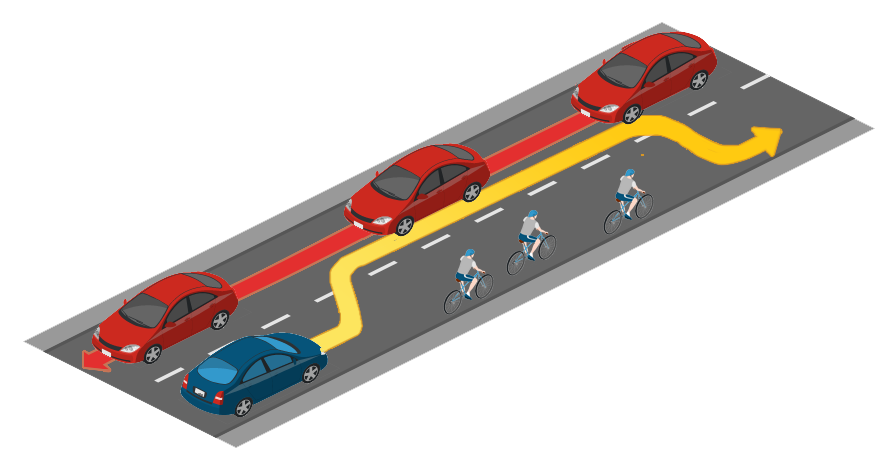
14a - Slow moving hazard at lane edge.
The ego-vehicle encounters a slow moving hazard blocking part of the lane. The ego-vehicle must brake or maneuver to avoid it next to a lane of traffic moving in the opposite direction.
The ego-vehicle encounters a slow moving hazard blocking part of the lane. The ego-vehicle must brake or maneuver to avoid it next to a lane of traffic moving in the opposite direction.
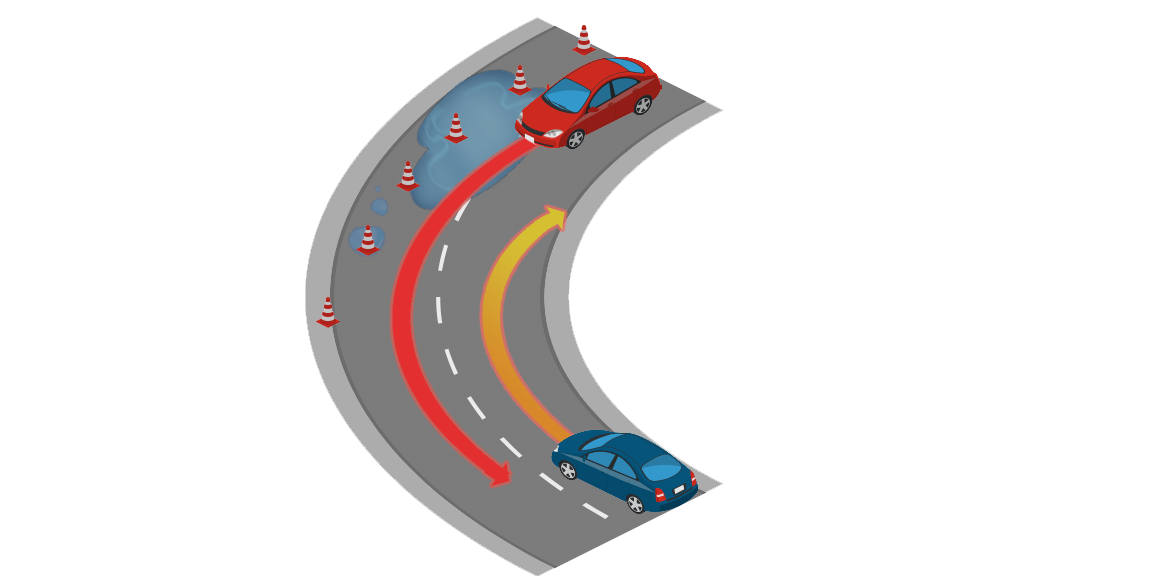
15 - Vehicle invading lane on bend.
The ego-vehicle encounters an oncoming vehicles invading its lane on a bend due to an obstacle. It must brake or maneuver to the side of the road to navigate past the oncoming traffic.
The ego-vehicle encounters an oncoming vehicles invading its lane on a bend due to an obstacle. It must brake or maneuver to the side of the road to navigate past the oncoming traffic.
Braking and lane changing
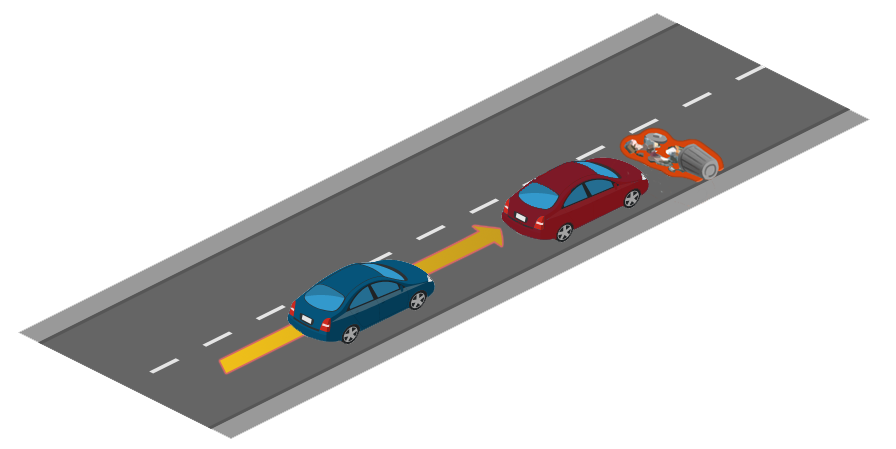
16 - Longitudinal control after leading vehicle’s brake.
The leading vehicle decelerates suddenly due to an obstacle and the ego-vehicle must perform an emergency brake or an avoidance maneuver.
The leading vehicle decelerates suddenly due to an obstacle and the ego-vehicle must perform an emergency brake or an avoidance maneuver.
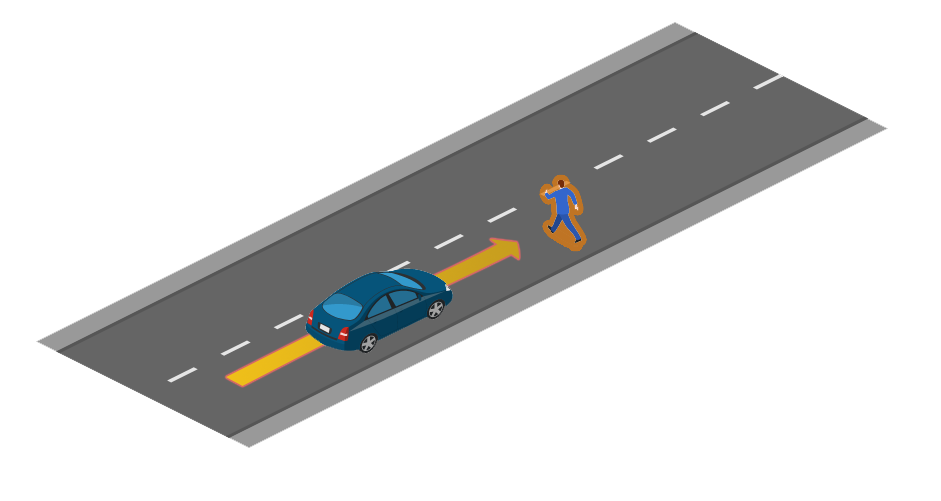
17 - Obstacle avoidance without prior action.
The ego-vehicle encounters an obstacle / unexpected entity on the road and must perform an emergency brake or an avoidance maneuver.
The ego-vehicle encounters an obstacle / unexpected entity on the road and must perform an emergency brake or an avoidance maneuver.
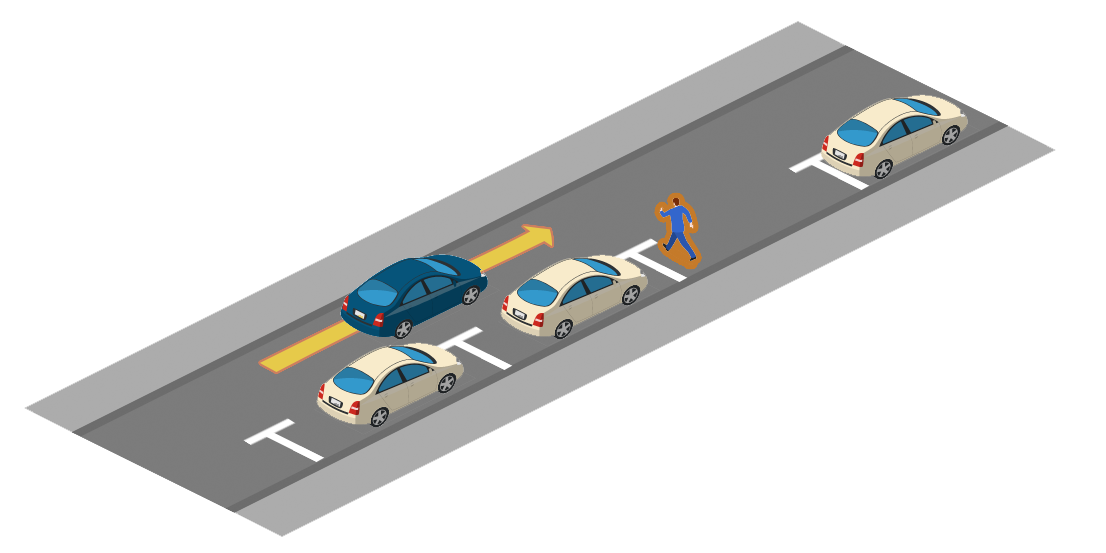
18 - Pedestrian emerging from behind parked vehicle.
The ego-vehicle encounters an pedestrian emerging from behind a parked vehicle and advancing into the lane. The ego-vehicle must brake or maneuver to avoid it.
The ego-vehicle encounters an pedestrian emerging from behind a parked vehicle and advancing into the lane. The ego-vehicle must brake or maneuver to avoid it.
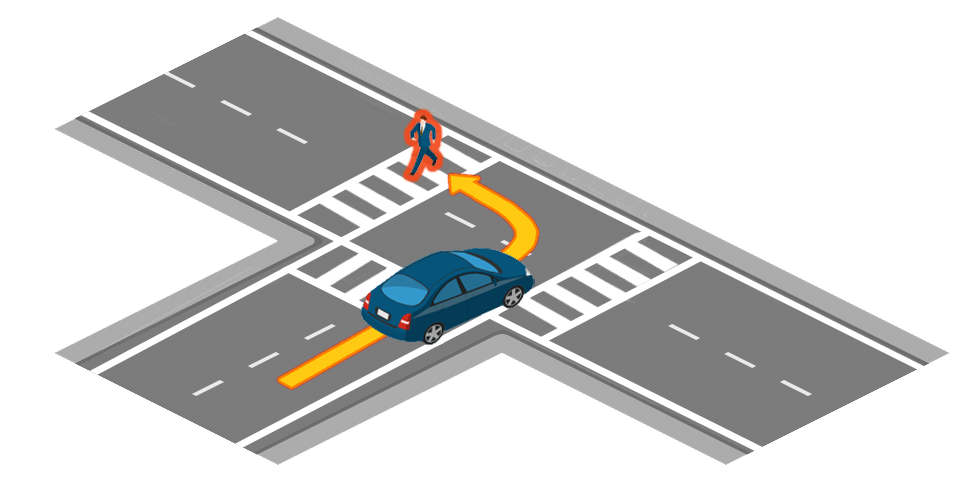
19 - Obstacle avoidance with prior action - pedestrian or bicycle.
While performing a maneuver, the ego-vehicle encounters an obstacle in the road, either a pedestrian or a bicycle, and must perform an emergency brake or an avoidance maneuver.
While performing a maneuver, the ego-vehicle encounters an obstacle in the road, either a pedestrian or a bicycle, and must perform an emergency brake or an avoidance maneuver.
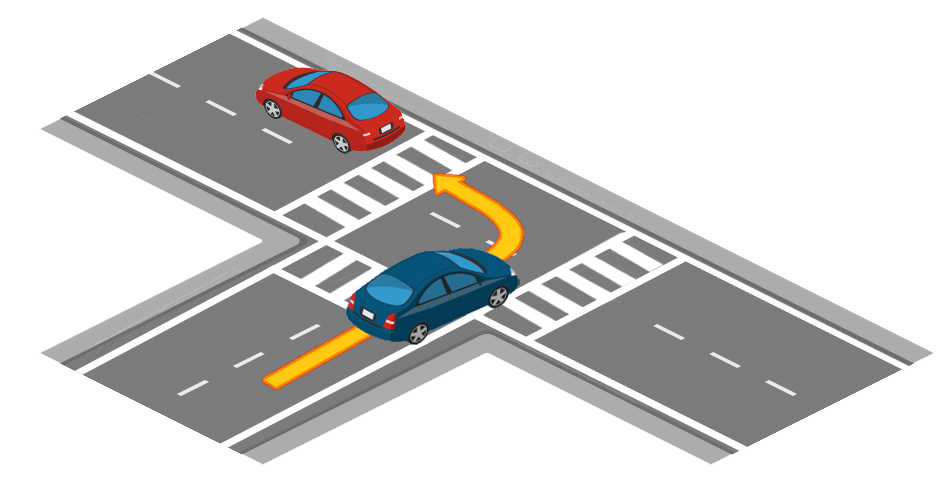
19a - Obstacle avoidance with prior action - vehicle.
While performing a maneuver, the ego-vehicle encounters a stopped vehicle in the road and must perform an emergency brake or an avoidance maneuver.
While performing a maneuver, the ego-vehicle encounters a stopped vehicle in the road and must perform an emergency brake or an avoidance maneuver.
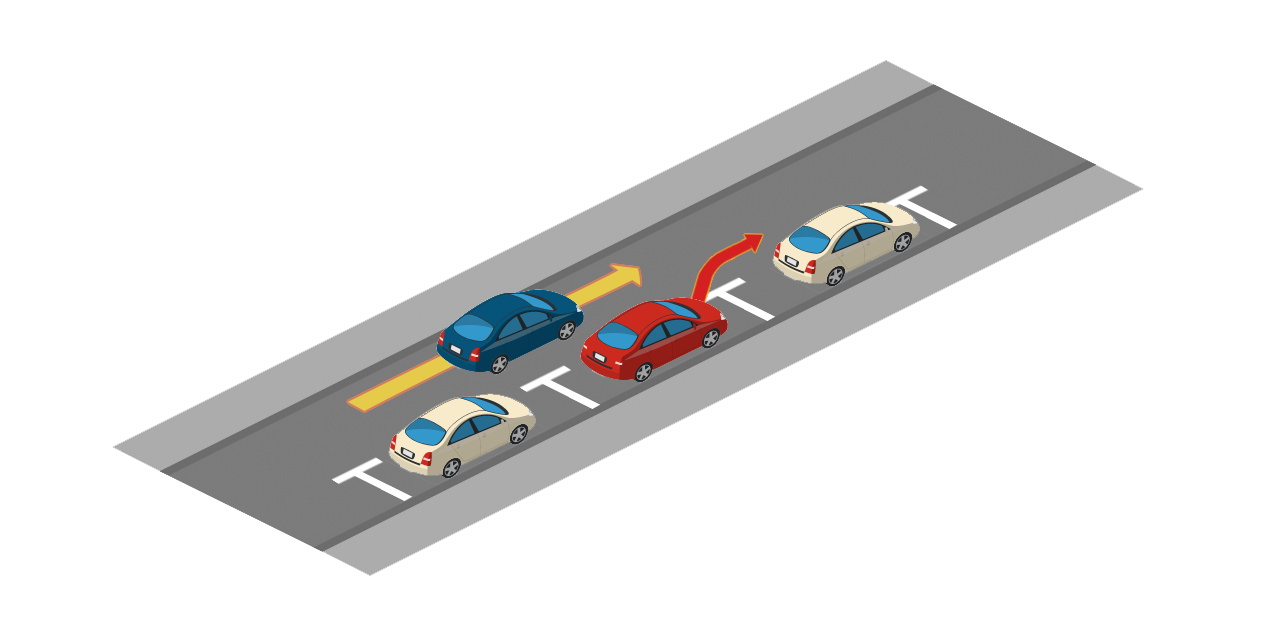
20 - Parking Cut-in
The ego-vehicle must slow down or brake to allow a parked vehicle exiting a parallel parking bay to cut in front.
The ego-vehicle must slow down or brake to allow a parked vehicle exiting a parallel parking bay to cut in front.
Parking
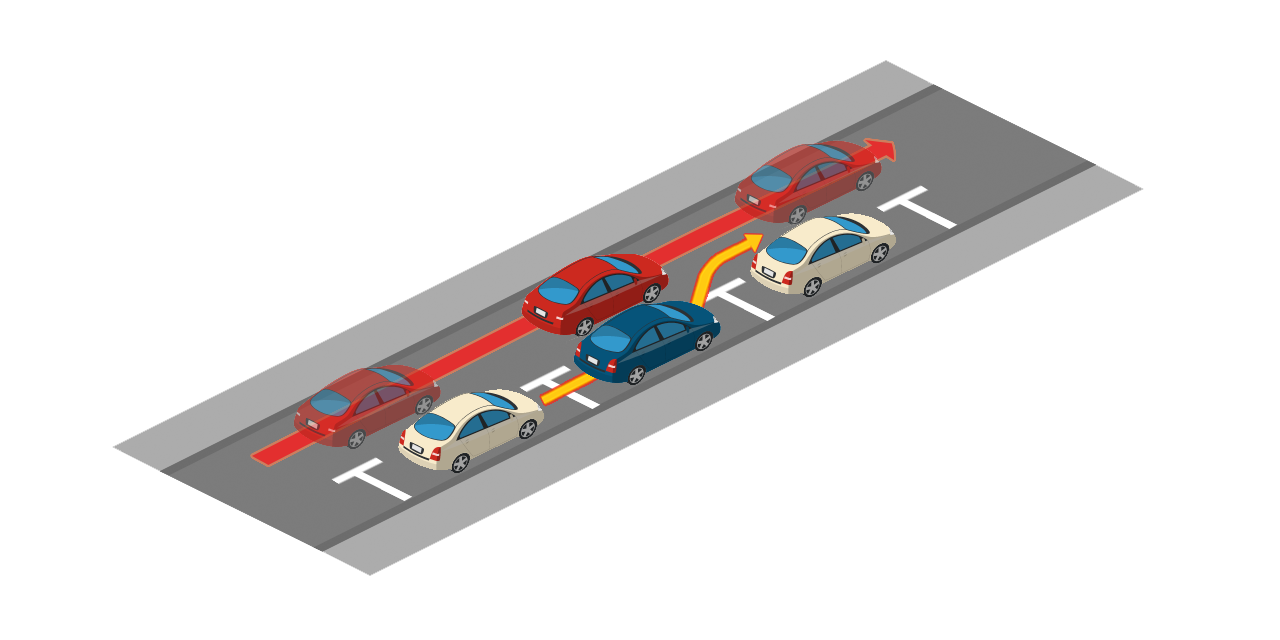
21 - Parking Exit.
The ego-vehicle must exit a parallel parking bay into a flow of traffic.
The ego-vehicle must exit a parallel parking bay into a flow of traffic.